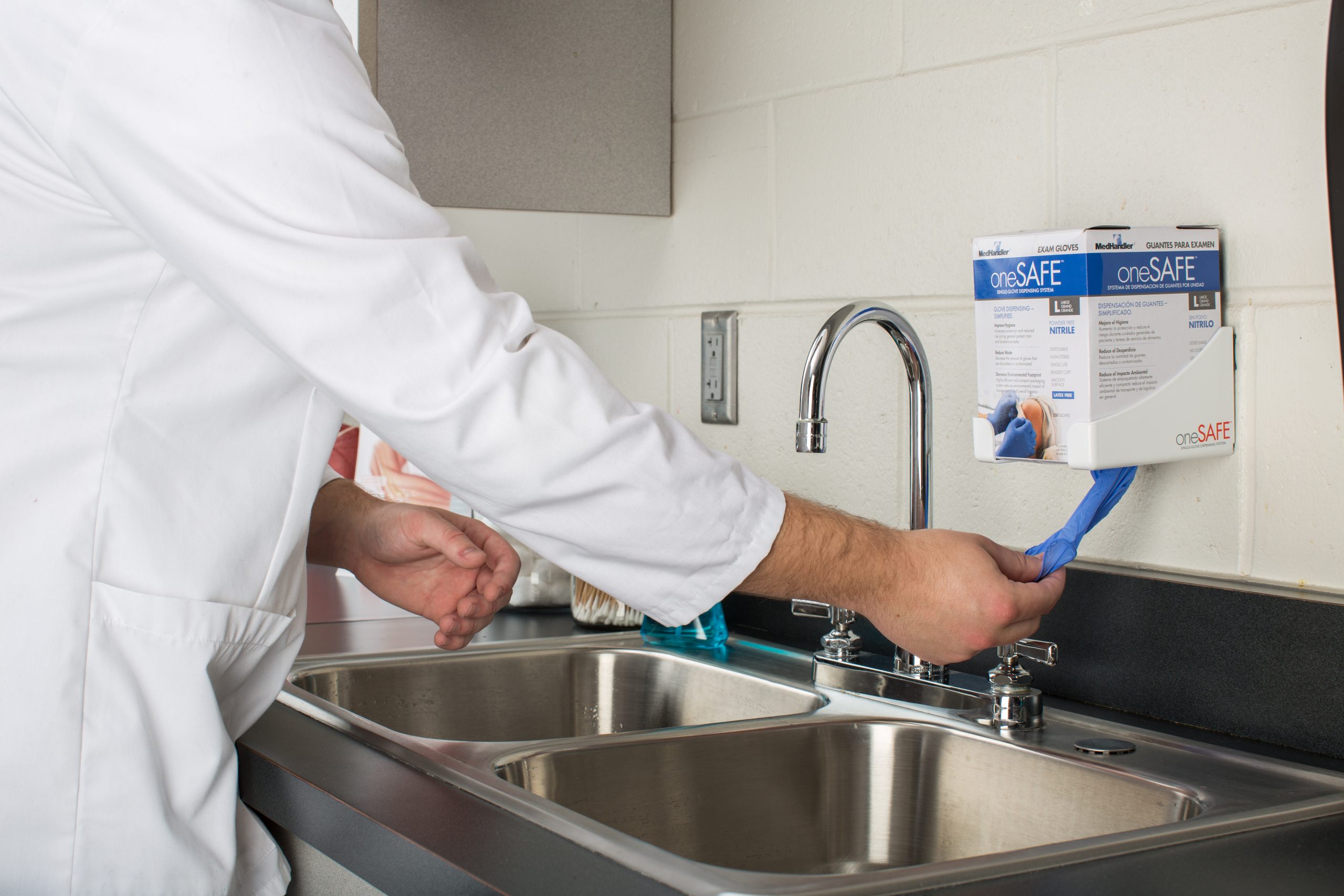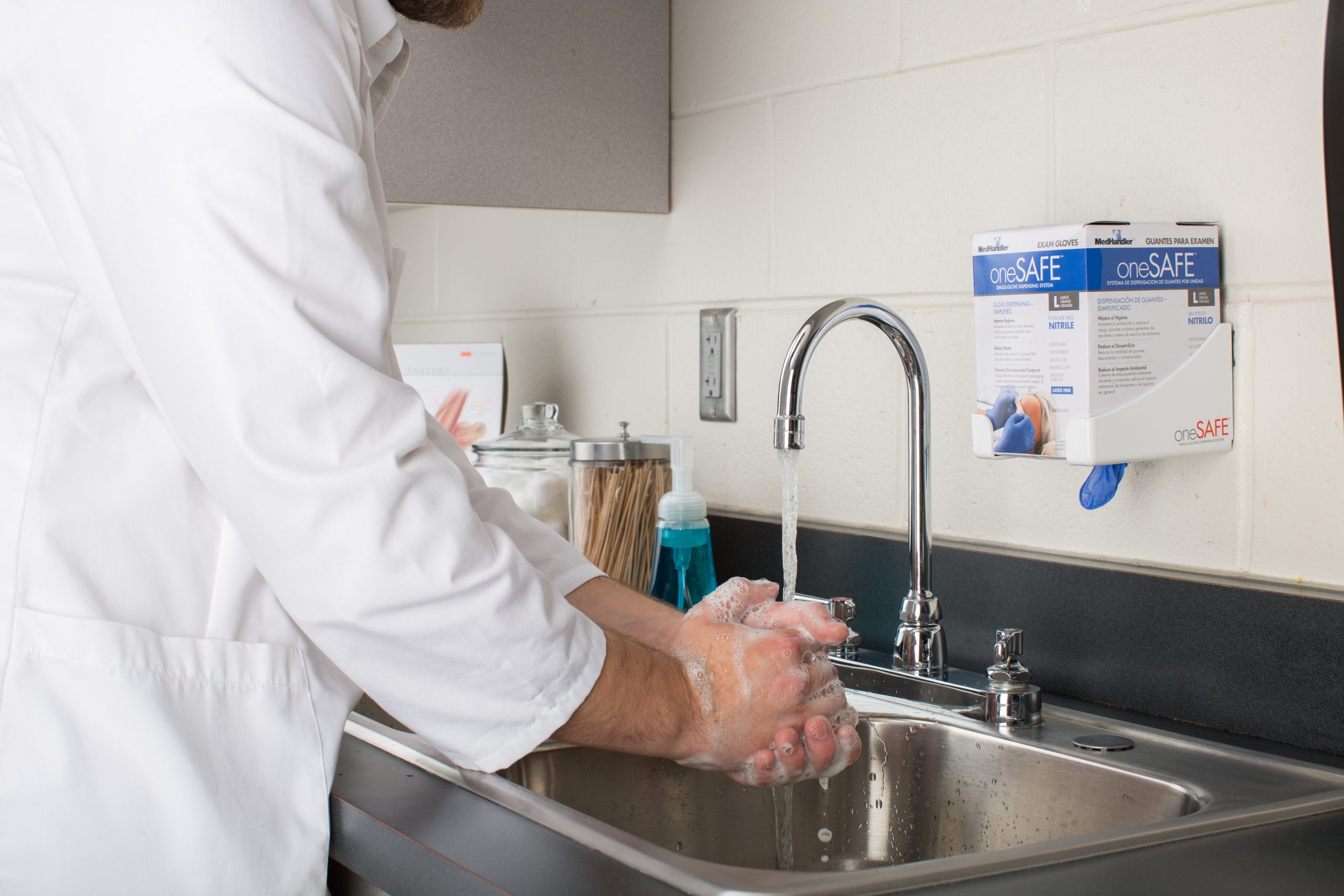Hand sinks: Often Taken for Granted, but an Essential Part to Effective Hand Hygiene
Late in January, I received a question about hand sinks in a foodservice operation. The question pertained to school staff (teachers and aides) who were using a hand washing sink in the school kitchen. The question came as a matter of who was allowed access to the kitchen to use the sink, but the question itself caused me to go down a rabbit hole of requirements for hand washing sinks in foodservice operations.
Hand sinks are, perhaps, taken for granted by many managers, supervisors, and employees in foodservice operations when it comes to reviewing hand washing effectiveness. They are easy to take for granted, until they are not working. Even in these blogs, we’ve focused on the correct procedure for washing your hands, when to wash hands, and hand washing supplies, but we don’t often focus on the hand sink.
The FDA Model Food Code states at least one hand sink should be available to employees. Further recommendations are that the sink should be convenient for employees who participate in food preparation, dispensing, and ware washing and there should be a hand sink immediately adjacent to restrooms.
…employees are more likely to wash their hands if the operation has more than one handwashing sink and/or a sink is located within the sight of the employee.
Our previous research has found that one big barrier to employees washing their hands is how convenient the sink is to their work area. Remember that your definition of convenient and your employees may very well differ. I once had one of my employees tell me that he can’t wash his hands as many times as he would need to by “the code”, simply because it takes too much time, and we expected him to get food out to our guests in a timely manner. Even though our management team thought that both hand washing sinks in the kitchen were convenient for all of our employees, employee perception didn’t agree – and it was the employees’ perception that really mattered as they were the ones working in that area 40 hours a week.
Other research in the field has also found employees are more likely to wash their hands if the operation has more than one hand washing sink and/or a sink is located within the sight of the employee. So how many is enough in your operation? The food code doesn’t give a straight answer to that question because it really does depend on your business. For a small-scale, limited production kitchen, one sink may very well be enough. However, for larger operations with complex food production, many sinks would be desired and recommended.
Solid recommendations on the number of sinks required are difficult to come by. Foodservice Equipment and Supplies Magazine noted that you should allow one hand sink for every five employees working in your kitchen at a time. Further, they noted that one hand sink should be planned for every 300 square feet of kitchen space, and one hand sink for each foodservice preparation and/or cooking area. These recommendations align with research in the area and would certainly mean that the hand washing sink is convenient and in view of each employee in the production area.
While this is great information to have, many who are reading this are likely dealing with kitchens that are already built and unable to easily renovate spaces to accommodate more hand washing sinks. In this case, it is imperative that we try to reinforce the importance of hand washing with our employees and remove any barriers they may have to washing their hands. Only then will employees start to change their behaviors and improve hand washing compliance.
Later this month, be on the lookout for the SafeBites Webinar Series announcements for 2023. We have an exciting set of webinars that we are planning this year. In the meantime, if you have any food safety questions, we are a quick email away and would be happy to assist. Risk Nothing.
READ MORE POSTS
Food Service Hand Hygiene: Basic Handwashing – Part II
Ignoring handwashing as a priority is easy until faced with a crippling lawsuit. Your risk of transmitting a foodborne disease via a food workers hands will never be zero, but the good news is training your crew about handwashing is not complicated. Molding behavior to do it at the right time, using the correct method is the tough part. The Centers for Disease Control & Prevention says the single most effective way to stop the spread of infection is through handwashing. Last month’s article was on the physical equipment to help get better handwashing compliance. The most important part is the practice of the basic handwashing steps:
The Physical Elements of Food Service Hand Hygiene – Part I
September is National Food Safety Education Month and the theme has a rhyme to it – “Keep Hands Clean with Good Hygiene”. Hand washing is one of the public’s best defenses against the spread of both common and rare, even life-threatening, diseases including those caused by food, and against gastrointestinal infections caused by such organisms as the Norovirus, which plagues the cruise ship industry and food service in general.
The Incredible, Edible Egg Safety Quiz
This nutritious, delicate food is a part of many food service menus as a main course and one of the most common ingredients. The U.S. Dept. of Agriculture says Americans consume an average of 234 eggs per person per year. Eggs have also been the source of some significant foodborne outbreaks in the U.S. from one specific type of Salmonella. While eggs are an important source of protein in the diet, an estimated 1 in 20,000 eggs in the U.S. supply will contain the SE (Salmonella Enteritidis) bacteria and can cause illness if eaten raw in foods or not thoroughly cooked before consumption.
Fetching a Pail of Good, Safe Water
In the ambitious fight for food safety, don’t overlook the safety and quality of the crystal clear liquid coming out of your faucet. The United States has controls in place to ensure we have potable (safe) water that is treated and filtered to make it taste better and have no odor. Water standards and treatment are also important in food service so we don’t need a repairman twice a year to chip away the block of lime on the dishwashers heating element with a hammer and chisel in order to replace it.










